
by Dharam CW2 | Feb 29, 2024 | Project Management
Projectification on Social Projects Globally | Thomas Walenta | Dharam Singh | Episode 61
Dive into a riveting discussion on the transformative power of global project management in the latest episode of our podcast, featuring the esteemed Thomas Walenta and myself.
🌐 Episode 61 explores the concept of ‘projectification’ and its profound influence on social projects worldwide, dissecting the intricate dynamics between project management and societal advancement.
🔍 We delve into:
– The burgeoning impact of project management on society and global practices.
– Unique challenges and requirements faced by the public sector in project portfolio management.
– Strategies for government organizations to embed a robust project management culture.
– The ripple effect of projects on societal structures and organizational operations.
– Analyzing and measuring project quality against stringent criteria.
This episode is an essential listen for senior project, program, and portfolio management professionals seeking to grasp their work’s far-reaching implications on society and understand how projects are becoming the bedrock of operational strategies globally.
🎧 Tune in to gain invaluable insights that will redefine your perspective on the project’s role in societal development.
▶️ Watch now: https://youtu.be/rMb7BJ6TuZA
🚀 Elevate Your Project Management Career:
– Register for my upcoming PgMP/PfMP Success Story Webinar: https://bit.ly/4bd68h8
– Book an obligation-free consultation session on Project management Career, training, and certifications: http://talktodharam.com
– Discover training offers and certification discounts: https://bit.ly/3jWVepD
– Stay updated with our Q&A series and certification success stories by subscribing to the vCare Project Management YouTube channel at https://bit.ly/2YF0wJl
– Follow my podcasts and interviews with Project Management Experts on YouTube at https://bit.ly/2NDY8wd
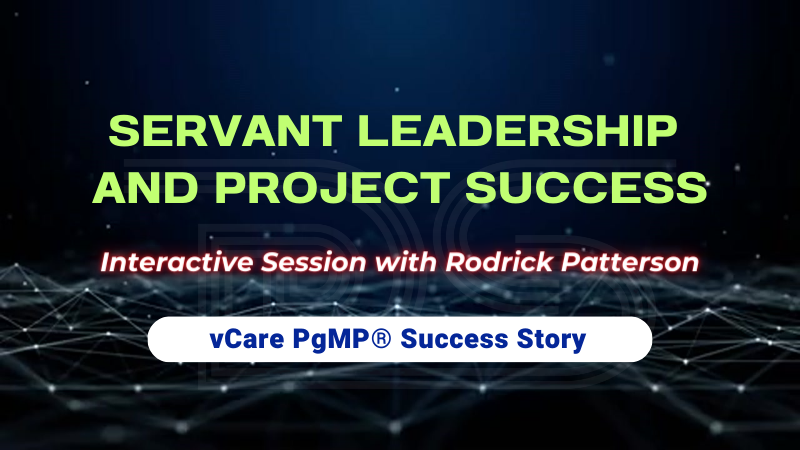
by DharamCW | Feb 13, 2024 | Professional Development Webinars
Servant Leadership and Project Success | Free Webinar with Rodrick Patterson | 1 PDU
I’m excited to invite you all to a thought-provoking session with Rodrick Patterson, PgMP, PMP, CSCP, Expert, Founder, President & CEO of RRP & EDU Consulting from Jackson, Mississippi, United States, renowned for his strategic Project, Program, and Portfolio Management insights. This webinar is a must-attend for those ready to embrace the shift toward servant leadership in the project management realm.
🔑 In our conversation, Rodrick will shed light on:
– Characteristics of servant leaders in project and program management.
– The transition from command-and-control to employee empowerment.
– Overcoming barriers in current leadership models.
– Long-term strategies for team development and effectiveness.
Session Date: 23rd February 2024 / 24th February 2024
Session Time: 12:30 PM – 01:30 PM (PST) / 01:30 PM – 02:30 PM (MST) / 02:30 PM – 03:30 PM (CST) / 03:30 PM – 04:30 PM (EST) / 05:30 PM – 06:30 PM (BRT) / 08:30 PM – 09:30 PM (GMT) / 07:30 AM – 08:30 AM (AEDT) / 09:30 AM – 10:30 AM (NZDT)
🔗 Secure your seat and elevate your leadership skills: https://bit.ly/3S53K3a
📅 Don’t miss this chance to refine your leadership approach and drive your team towards remarkable achievements.
Earn 1 PDU and join the ranks of project professionals who lead with service, empathy, and vision.
🚀 Elevate Your Project Management Career:
– Book an obligation-free consultation session on Project management Career, training, and certifications: http://bit.ly/2SbhTOK
– Discover training offers and certification discounts: https://bit.ly/3jWVepD
– Stay updated with our Q&A series and certification success stories by subscribing to the vCare Project Management YouTube channel at https://bit.ly/2YF0wJl
– Follow my podcasts and interviews with Project Management Experts on YouTube at https://bit.ly/2NDY8wd
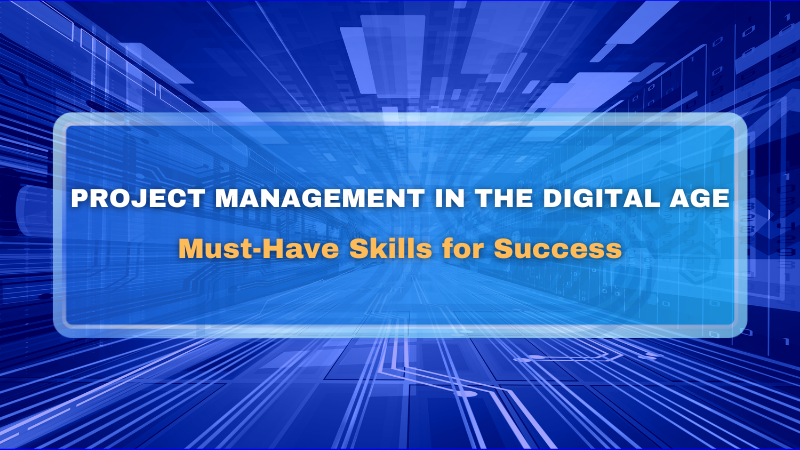
by DharamCW | Feb 11, 2024 | Project Management
Project Management in the Digital Age: Must-Have Skills for Success
Digital Mastery: The New Frontier for Project Managers
In the ever-evolving landscape of project management, embracing digital skills is no longer optional—it’s imperative. Let me try to guide you through some digital competencies that are now critical in the project management arena.

Digital Skills for Project Managers
1️⃣ Data Science Prowess: Unlock project potential with data analytics, transforming raw numbers into actionable insights.

Data Science Skills
2️⃣ Innovative Mindset: Cultivate creativity to drive breakthroughs in project execution, proving that innovation is the new currency in our field.

Innovative Mindset
3️⃣ Security & Privacy Acumen: Safeguard sensitive information, ensuring that every digital footprint meets stringent security protocols.

Security & Privacy Knowledge
4️⃣ Regulatory Compliance Know-how: Bridge the gaps between diverse teams, guaranteeing legal and regulatory harmony across project lifecycles.

Legal and Regulatory Compliance Knowledge
5️⃣ Data-Driven Decision Making: Harness the power of data to steer strategic decisions, elevating projects with precision and foresight.

Ability to Make Data-Driven Decision
6️⃣ Collaborative Leadership: Foster unity in remote and diverse teams, employing cutting-edge tools to amplify collective efficiency.

Collaborative Leadership Skills
Mastering these skills doesn’t just prepare you for the future—it catapults you there.
Embrace the digital revolution and elevate your project management game to new heights. Let’s transform challenges into opportunities with the right digital toolkit.
Follow Me On,
Linkedin – https://bit.ly/3jJ0zeS
Facebook – https://bit.ly/3jQRTmV
Instagram – https://bit.ly/3h6xzMB
Twitter – http://bit.ly/3zB4Qv0
Pinterest – http://bit.ly/40H4Fdu
YouTube – https://bit.ly/2NDY8wd

Follow Me On Social Medias
🚀 Elevate Your Project Management Career:
– Register for my upcoming PgMP/PfMP Success Story Webinar: https://bit.ly/3S53K3a
– Book an obligation-free consultation session on Project management Career, training, and certifications: http://bit.ly/2SbhTOK
– Discover training offers and certification discounts: https://bit.ly/3jWVepD
– Stay updated with our Q&A series and certification success stories by subscribing to the vCare Project Management YouTube channel at https://bit.ly/2YF0wJl
– Follow my podcasts and interviews with Project Management Experts on YouTube at https://bit.ly/2NDY8wd
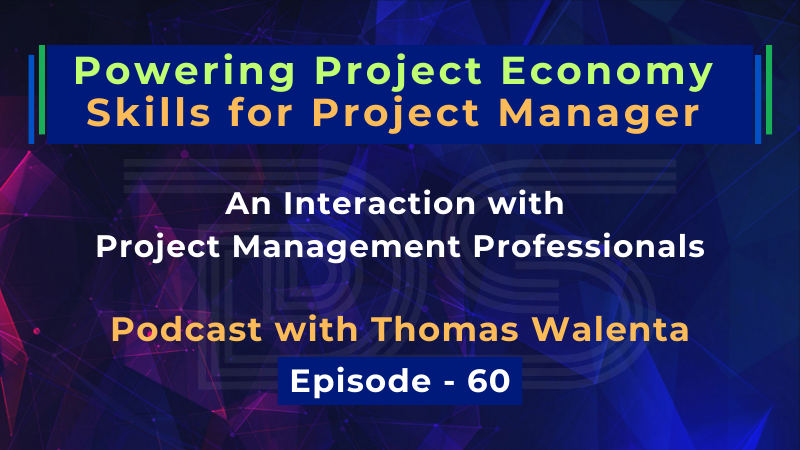
by DharamCW | Jan 28, 2024 | Project Management
Harnessing the Power of the Project Economy | Join Thomas Walenta & Dharam Singh in Episode 60
In the rapidly changing landscape of the project economy, project managers stand at the forefront of innovation and transformation. I’m thrilled to join forces with Thomas Walenta to bring you an episode brimming with insights on thriving in this dynamic environment.
We tackle the essentials:
– The driving forces shaping the project economy.
– Reshaping workforce models for the future.
– Addressing the ‘glass ceiling’ in project management.
– Tactics for leading through economic uncertainties.
– The crucial role of ethics in the tech-driven business world.
– Navigating threats and leveraging opportunities in the project economy.
– Essential skills and competencies for today’s project managers.
– Leadership strategies that make a difference.
– Adapting and succeeding amidst digital transformation.
Every project manager has the potential to become an architect of change. Equip yourself with the knowledge to lead with confidence and agility.
🎯 For Project Management professionals eager to elevate their careers, seize this chance:
– Register for my upcoming PgMP/PfMP Success Story Webinar: https://bit.ly/3vL2Q4J
– Book an obligation-free 15-minute session with me: http://bit.ly/2SbhTOK
– Stay updated with our Q&A series and certification success stories by subscribing to the vCare Project Management YouTube channel at https://bit.ly/2YF0wJl
– Follow my podcasts and interviews with Project Management Experts on YouTube at https://bit.ly/2NDY8wd
– Avail Exclusive offers on our website: https://bit.ly/3jWVepD
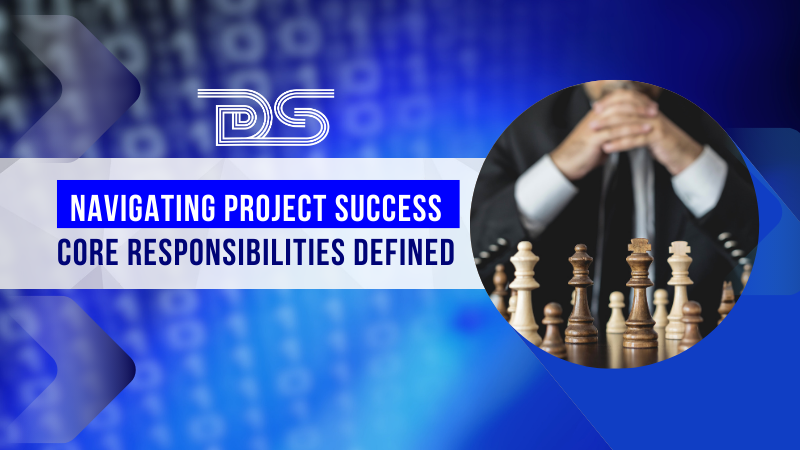
by DharamCW | Jan 23, 2024 | Project Management
Exploring the Multifaceted Role of a Project Manager
As we navigate the complexities of project management, understanding the core responsibilities of a Project Manager is key to success. I’m breaking down some critical duties that set exceptional Project Managers apart.
A Project Manager is the compass that guides a project’s journey, ensuring that every aspect aligns with the strategic vision:
🔍 Defining scope and deliverables in partnership with clients
📝 Tailoring project plans to dynamic business needs
🎯 Steering project strategies towards goal achievement
🤝 Fostering collaboration for seamless integration of activities
🛠 Managing resources and mitigating risks with precision
🔖 Upholding quality and adapting swiftly to project shifts
🗣 Communicating milestones and driving project reviews
📚 Establishing robust documentation processes
🚀 Orchestrating a strategic product release
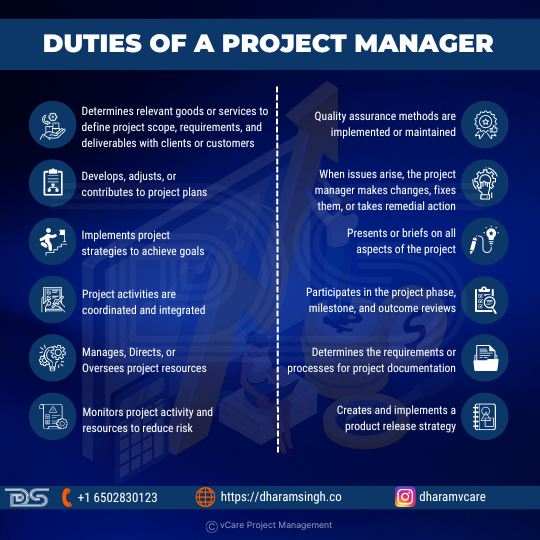
Duties of a Project Manager
These roles are not just tasks but the stepping stones to operational excellence and project triumph.
Let’s master the art of project management together!
Elevate Your Project Management Career:
– Book an obligation-free consultation session on Project Management career, training, and certifications: http://bit.ly/2SbhTOK
– Stay updated: Subscribe to our YouTube Channels for more insights: https://bit.ly/2YF0wJl and expert interviews: https://bit.ly/2NDY8wd
– Discover training offers and certification discounts: https://bit.ly/3jWVepD


















Recent Comments